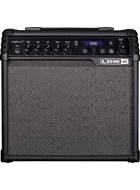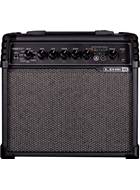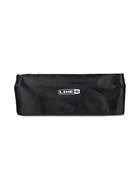Line 6 Spider
1-4 of 4 productsFilter

Line 6 Spider V 30 MKII Combo Modelling Amp
(4)
£249.00
£281.00
Get it Thursday, Apr 25
FREE Delivery
In Stock

Line 6 Spider V 20 MKII Combo Modelling Amp
(5)
£159.00
£198.00
Get it Thursday, Apr 25
In Stock

Line 6 Spider V 240 Amp Cover
£9.99
Get it Thursday, Apr 25
In Stock

Line 6 Spider V 240H Head Cover
£9.99
£39.99
Get it Thursday, Apr 25
In Stock
About Line 6 Spider
The Line 6 Spider is the ever popular range of modelling amplifiers manufatured by Line 6. Extremely popular with beginner players, these amplifiers use computer modelling technology to accurately recreate a wide variety of amp styles, sounds and effects, allowing newer players the ability to experiment and utilise a wide range of presets to find a sound that works for them.
The Line 6 Spider V is the latest in the range, and boasts a range of features and options among the series. From the streamlined and slick 20w , to the stage-ready 240w and everything in between, there's an option for any player and price point.
Why Should I Choose a Line 6 Spider?
- Great modelling technology
- Easy to use
- Versatile
- Range of pricepoints
- Great for beginners
Frequently Asked Questions about Line 6 Spider
Question: How many watts is a Line 6 Spider amp?
Line 6 Spider Amps vary in wattage depending on the model. They range from 20w all the way to a whopping 240w.
Question: Do I need a particular footswitch to change channels on a Line 6 Spider V amp?
Yes, you need to use the Line 6 FBV3 footswitch. Nothing else will work properly. Also, please note that the Spider V 20 does not accept a footswitch. All of the other models do.
Question: How many preset tones do the Spider V amps have onboard?
All Spider V amps, with the exception of the Spider V 20, have 128 onboard preset tones in a wide range of styles. The Spider 20 has 16, with 128 presets being accessible via the Spider V Remote software.
Question: Are Line 6 Spider amps any good?
Yes. Line 6 Spider Amps are very good amps at very attractive price points. They are very easy to use, and expose players to a wide range of effects and sound options making them great for beginner players who are looking to sample a lot of sound options in one convenient package.
Question: Is Line 6 Spider a tube amp?
No. Line 6 Spider Amps are Modelling Amps, meaning that they use computer technology to to accurately replicate the sounds of other amplifiers/effects units.
